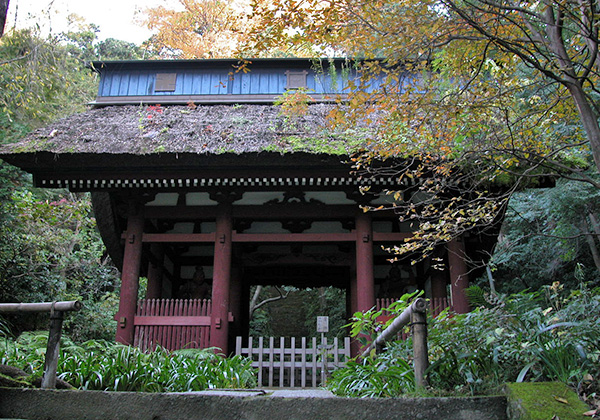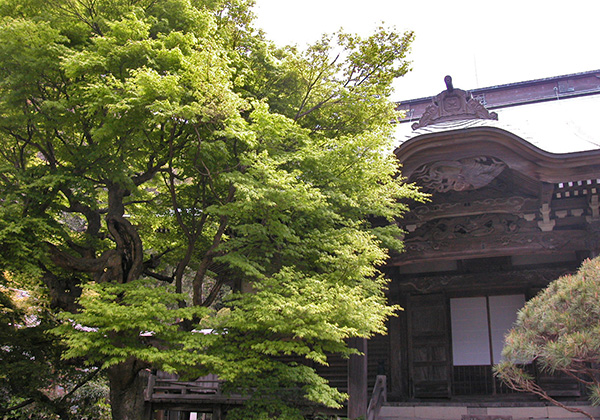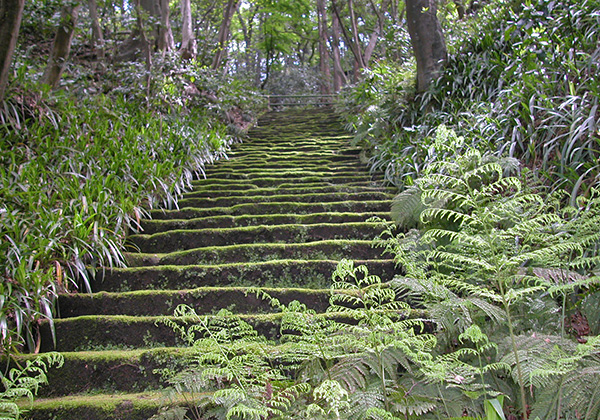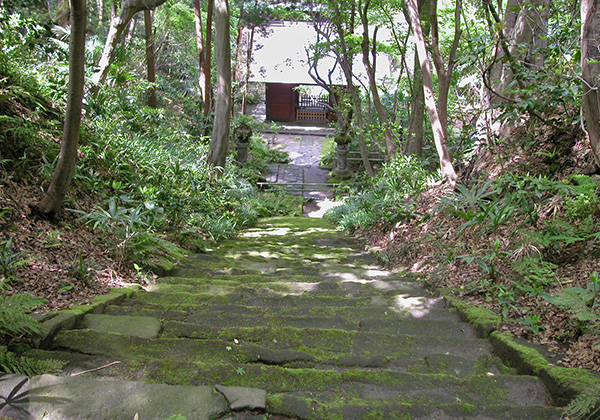Myohoji
| Official Name | Ryogonzan Myohoji {Pronounced ryo-gon-zan myo-hoe-gee} |
|---|---|
| Religious sect | Nichiren sect, Buddhism |
| Founded | in 1253 by Unknown |
| Founding priest | Nichiren {nee-che-ren} |
| Main object of worship | A group of statues and Odaimoku tablet |
| Address | 7-4, Omachi 4-chome, Kamakura, Kanagawa 248-0007 (show route from current location ) |
| Location | 1,500 meters southeast of Kamakura Station |
| Time needed to get there | 15 minutes |
| Admission | JPY300 |
| Open | 9:30 - 16:30 *Open only on Saturdays, Sundays, and holidays from the second week of December to mid-March and from the second week of July to mid-September. |
| Phone number | 0467-22-5813 |
| Restrooms | Available |
Historical Overview
This is the place where Priest Nichiren (1222-1282), the founder of the Nichiren Sect, first settled in 1253 at the age of 31 to begin his missionary work in Kamakura, the nation's capital, coming from his home town in Chiba Prefecture. He made a hermitage here and later built a temple called Honkokuji {hon-kok-gee}, which was, however, relocated to Kyoto in 1354.
Priest Nichiren is said to have lived here for more than 20 years making it as a propagation base and was engaged in street preaching in Kamakura. As he fiercely attacked other religious sects as heathenish, he was often persecuted.
Priest Nichiei {nich-a} (1334-1397), a devotee of the Nichiren sect and son of Prince Morinaga {moh-re-nah-gah} (1307-1335), to whom Kamakuragu Shrine was dedicated, built the Temple anew in 1357 and assumed the post of the fifth chief priest. From then on, the Temple was patronized by the imperial family in Kyoto. He also constructed cenotaphs for his parents on top of the hill behind the main hall. Ryogon-zan Myoho-ji was named after his childhood and Buddhist names.
In the Edo Period (1603-1868), the Temple was protected by the Tokugawa Shogunate and its affiliated feudal lords. The Eleventh Shogun Ienari Tokugawa {e-eh-nah-re toh-koo-gah-wah} (1773-1841) repaired to the Temple, and by his order, the entrance, Hokkedo, Deva King gate were painted red.
The Temple has a number of precious statues and ancient writings. Unfortunately, most of them are not open to the public and doors of the halls enshrining Buddha statues are usually closed. In general, the Nichiren sect Buddhists have a traditional policy of "Not giving, not receiving", or the policy that Nichiren Buddhists should not receive or give offerings from or to other sects Buddhists. In other words, the Sect is a closed circle and we can rarely have a chance to face and worship the statues. Even art books hardly carry photographs of their statues.

Moss-grown steps

The Temple is often termed "the moss temple" with its moss-covered stone steps (roughly 50) leading up to the Hokkedo hall from the Deva gate. In order to preserve this natural beauty, visitors are not allowed to walk on the steps. Instead, there are a spare flight parallel to it from which they can observe the moss and walk up to the Hokkedo hall. From late April through May, white flowers of Shaga (fringed iris or Iris japonica) are in full bloom on both sides of the steps. In June, the moss is lively and most beautiful.



